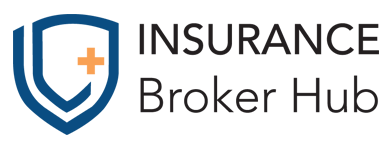ACA subsidies were a core part of the term “affordable” in the Accordable Care Act. When paired with cost sharing programs for very low income individuals, these two systems were designed to reduce the ongoing costs associated with obtaining insurance and care.
Enrolling in a Marketplace Plan: Special Enrollment Periods and Open Enrollment
Available to anyone who enrolls in a Marketplace Plan, subsidies are provided to anyone making less than 400% of the poverty level. But before explaining what this means, you first need to understand the timeline and time frame to apply for coverage.
Open Enrollment 2021: November 1-December 15, 2020
Held at the end of each year preceding your coverage’s start date, Open Enrollment is the time you are generally allowed to sign up for coverage on the Marketplace. For Marketplace plans beginning January 1, 2021, you will be eligible to enroll between November 1 and December 15, 2020 (although some states, including California and Colorado, have permanently extended their open enrollment periods).
Learn more in Open Enrollment Begins November 1: What Can You Expect?
Do You Qualify for a Special Enrollment Period?
In addition to Open Enrollment, there are also specific events that may allow you to enroll outside of this period called Qualifying Life Events. As we discussed in our recent blog on Qualifying Life Events, Special Enrollment Periods, and the Special COVID-19 Qualifying Life Event,
“Under the 2010 Affordable Care Act, those looking to enroll for health coverage on the insurance marketplaces must do so during Open Enrollment, the yearly period when people can enroll in a health insurance plan. However, special circumstances can allow you to enroll outside of these periods.
These circumstances, called Qualifying Life Events, represent a change in someone’s situation that allows them to become eligible for a Special Enrollment Period, allowing someone to enroll in health insurance within a certain timeframe after such event happens.”
What to Expect When You’re Enrolling: How to Qualify for Cost Reduction
Whether you’re in need of coverage to hold you over between September and January or are ramping up for Open Enrollment 2021, you’ll have a variety of options available to you depending on the state and coverage options. All plans will be required to provide coverage for the ten essential health benefits and you’ll need to compare your options between the different metal plans—bronze, silver, gold, and platinum—but there are certain stipulations for receiving a subsidy.
Federal Poverty Level
As mentioned earlier, ACA subsidies are designed to save you money on your health insurance premiums. That said, these are reliant on Federal Poverty Levels (which are also called Federal Poverty Guidelines, Federal Poverty Line, or simply FPL), used to see if you qualify for cost assistance when buying insurance through the State or Federal Health Insurance Marketplace.
(Note: Subsidies and Cost Sharing for SEP in 2020 will rely on 2019 Federal Poverty Level. View these here)
For 2020, the FPL is as follows, based on the number of persons in your household:
- 1 Person: $12,760
- 2 People: $17,240
- 3 People: $21,720
- 4 People: $26,200
- 5 People: $30,680
- 6 People: $35,160
- 7 People: $39,640
- 8 People: $44,120
- Each additional person adds $4,480/person.
You can also view poverty guidelines for Alaska and Hawaii on the Health and Human Services Website. Those making up to 138% of the FPL may be eligible for Medicaid for those states that expanded their Medicare.
Cost Sharing Subsidies: 250% of Federal Poverty Line
The ACA Cost Sharing Reduction Subsidies (CSR) lower out-of-pocket costs, based on income, for Silver plans bought on the Health Insurance Marketplace. CSR subsidies lower the out-of-pocket costs you may face throughout the life of your plan, and are available to anyone who makes between 100%-250% of the FPL. These subsidies cover deductibles, coinsurance, and copays, potentially reducing the maximum out of pocket costs you are responsible.
To see if you qualify for Cost Sharing Reduction Subsidies, you must buy a plan on the Marketplace, make between 100% and 250% of FPL, and choose a Silver plan.
Advanced Premium Tax Credits: Up to 400% FPL
The more commonly available subsidy for those enrolling in a Marketplace plan is that of the Advanced Premium Tax Credit. These tax credits cap the maximum premium you can pay—approximately 2%-9.5% of your Modified Adjusted Gross Income for the second lowest cost silver plan.
Tax credits can be paid in advance to lower your premium upfront or can be deducted from your Federal income taxes at the end of the year. If you didn’t take the full Tax Credit in advance or if you made less than you projected in last year and didn’t adjust your info in the marketplace, you can deduct the remaining amount on your Federal Income Taxes using Form 8962, Premium Tax Credit (PTC). Everyone who takes a tax credit needs to file form 8962.
See if You’re Eligible for Cost Reduction: Free Quote from Insurance Broker Hub
The Kaiser Family Foundation Health Insurance Marketplace Calculator will let you enter a few details to see if you can save some money. Updated annually, this is currently available for plans in 2020. Want an easier way to see if you’re eligible for cost sharing or tax credits? Enlist a broker to do the job for you.
Shopping for insurance used to be confusing and time-consuming. But with the help of our national network of licensed brokers, it doesn’t have to be. Insurance Broker Hub has helped over 10,000 consumers find the coverage they need at a price they can afford.
Our free service gives you access to an independent network of national brokers who have the experience and expertise to design a plan around your needs and budget. Ready to get started? Simply request a no obligation health insurance quote here.
Additional Resources
What Are the Federal/Marketplace Essential Health Benefits?
Health Insurance Basics: What is a Preexisting Condition?
COBRA vs. Marketplace Coverage: Your Options in the Event of Job Loss


